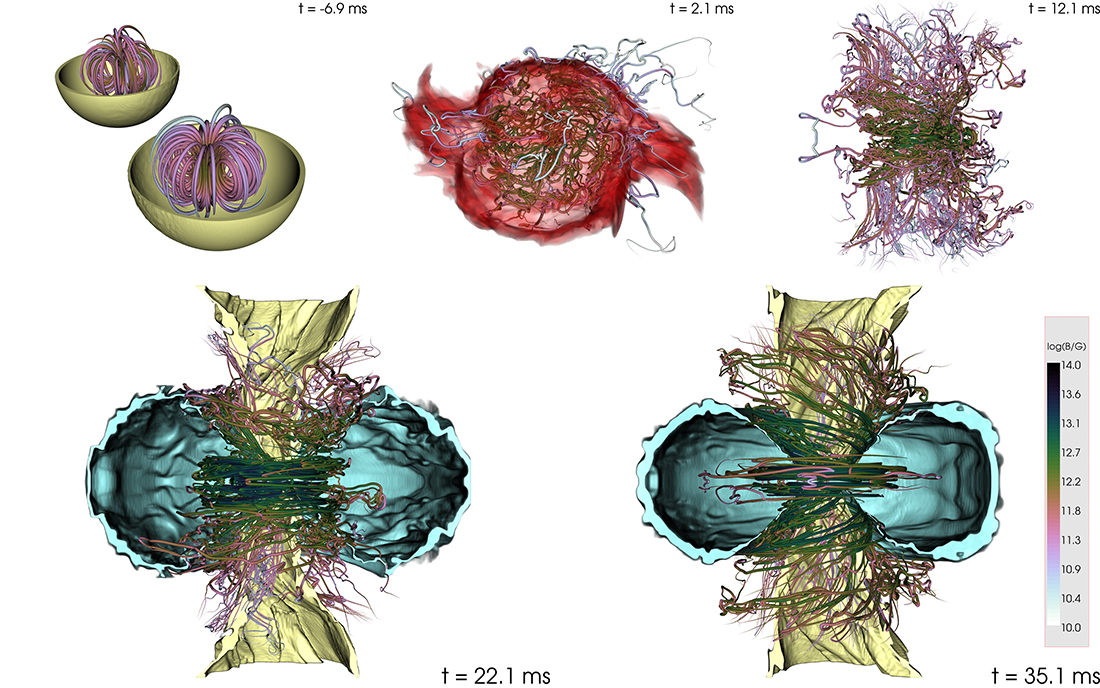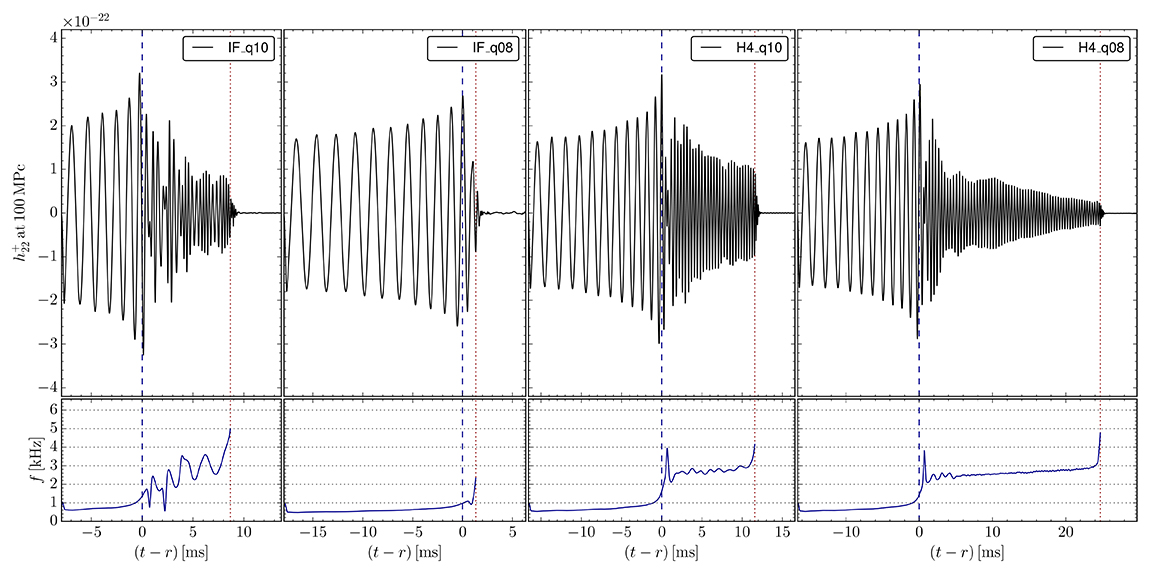ASTROPHYSICS
GRSimStar - General Relativistic Simulations of Binary Neutron Star Mergers
Principal Investigator:
Bruno Giacomazzo
Affiliation:
University of Trento and INFN-TIFPA, Trento, Italy
Local Project ID:
GRSimStar
HPC Platform used:
SuperMUC of LRZ
Date published:
What can we learn from some of the most powerful explosions in the universe? Researchers in Italy, USA, and Japan joined forces to study, via computer simulations in general relativity, what happens when two neutron stars in a binary system finally merge. Besides black holes, neutron stars are the most compact objects ever observed. Their collisions can produce bright electromagnetic emission and strong gravitational waves. Understanding how to relate the different signals with the properties of neutron stars may allow us to understand how matter behaves in conditions so extreme that cannot be reproduced on Earth.
Neutron stars are the remnants of supernova explosions (the spectacular deaths of massive stars) and the densest objects in the universe besides black holes. A typical neutron star concentrates more than the mass of the Sun within a radius of only about 10 km. Because of their extreme gravity a proper description of neutron stars requires Einstein's theory of General Relativity.
Investigating neutron star properties can shed light on the behavior of matter at very high densities, which is not yet well understood by nuclear physics. Two neutron stars can also bind together in a binary system, and orbit around each other for millions of years with a smaller and smaller separation. Eventually, the two merge together in an instant (just a few milliseconds) resulting either in a black hole or in a rapidly rotating super-heavy neutron star, which can still collapse to a black hole later on.
Binary neutron star mergers are among the most violent astrophysical events, which give rise to powerful gravitational wave signals that could be measured by the gravitational wave detectors LIGO and Virgo. They may also produce bright electromagnetic emission and be responsible for short gamma-ray bursts.
The GRSimStar project, led by Prof. Giacomazzo at the University of Trento in Italy, studied the dynamics of different binary neutron star systems, considering neutron stars with different masses, different mass ratios, different equations of state (describing the internal composition of neutron stars), and different magnetic field configurations. The aim was to compute the gravitational wave signals and electromagnetic emission that these systems can emit. This project involved researchers and students at the University of Trento (Endrizzi, Ciolfi, Kastaun, Kawamura) in Italy, at Columbia University (Siegel) and at Stony Brook University (Perna) in the USA, and at Osaka University (Baiotti) in Japan.
The simulations used the WhiskyMHD code and were run on the cluster SuperMUC at LRZ in Garching/Munich. A typical simulation used 2048 cores for approximately 20 days. More than 100 terabyte of data were generated and analyzed by the researchers. Some of the data, including the gravitational wave signals, were also made publicly available. Data of this kind can be compared with future detections of gravitational waves in order to distinguish between different neutron star physical models.
This project was made possible through the Partnership for Advanced Computing in Europe (PRACE).

Figure 1: Simulation of a binary neutron star merger. The different panels show different stages of the evolution highlighting in particular the magnetic field structure. The last two panels show the final stages of the simulation where a black hole surrounded by an accretion disk is formed. In this case a magnetized low-density funnel is also formed, which could launch a relativistic jet and possibly produce a short gamma-ray burst at a later time. The color of the field lines gives a rough indication of the field strength.
Copyright: Kawamura et al 2016, Phys. Rev. D 94, 064012
Figure 2: Gravitational wave signals emitted by four binary neutron star systems studied in this project. The top panels show the amplitude of the signals, while the bottom panels the characteristic frequency as a function of time (time is set to be equal to zero at merger). Note how the signals differ after the merger (vertical dashed line). Detecting these differences could help to distinguish binary neutron stars with different properties.
Copyright: Kawamura et al 2016, Phys. Rev. D 94, 064012Scientific Contact:
Prof. Bruno Giacomazzo
Department of Physics, University of Trento
Via Sommarive 14, 38123 Trento (Italy)
e-mail: bruno.giacomazzo [at] unitn.it
http://www.brunogiacomazzo.org